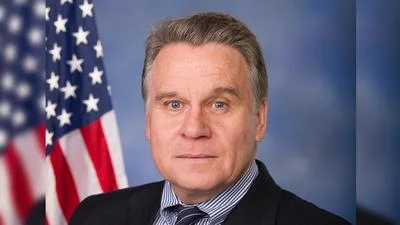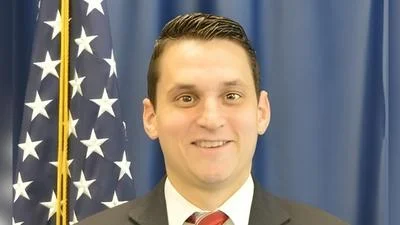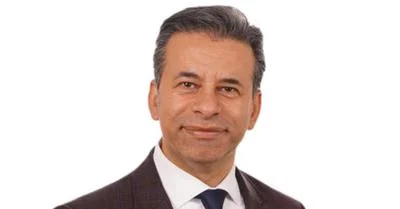The Congressional Record is a unique source of public documentation. It started in 1873, documenting nearly all the major and minor policies being discussed and debated.
“ENERGY POLICY” mentioning the U.S. Dept. of Energy was published in the Senate section on pages S4407-S4410 on May 7, 2001.
The publication is reproduced in full below:
ENERGY POLICY
Mr. MURKOWSKI. Mr. President, the purpose of my addressing my colleagues today is to question just what kind of energy policy is supportable in this country as a consequence of many of the leading opinion makers and newspapers relative to just how we go about addressing our energy crisis.
It might get the attention of the Chair to recognize that California alone, which has received an awful lot of notoriety, clearly has a crisis. It can probably best be addressed by indicating that in 1998 Californians spent $9 billion for energy--electric energy. In the year 2000, they spent $20 billion. In the year 2001, it is estimated they will have spent somewhere between $65 and $75 billion. It is not really necessary to say much more. If that is not an acknowledgment of that being a crisis, I do not know what is.
What I find frustrating is the inconsistency of just how we are going to get out of this crisis. I refer to an editorial appearing in the Washington Post today. It is entitled ``selling the Energy Plan.'' I ask unanimous consent that the editorial be printed in the Record.
There being no objection, the material was ordered to be printed in the Record, as follows:
Selling the Energy Plan
Soon President Bush will unveil his energy policy, and last week his administration began sounding some of the themes that will be used to sell it. The country faces an energy crisis, officials repeated. ``We're running out of energy in America,'' the president said; both new supplies and conservation are needed because ``we can't conserve our way to energy independence.'' Simple, compelling messages. The only trouble is, they're not exactly right.
The problem isn't ``running out of'' resources, it's getting them to the right places at the right time. While many consumers struggle with high bills, there's not a crisis of supply unless you live in California. And America won't reach true energy independence through any combination of production and conservation, at least as long as transportation runs on oil.
That's not to say there aren't serious challenges. There are, and meeting them will require hard choices. But it's important to be clear about the critical issues. Those include expanding infrastructure--such as pipelines, transmission lines and refineries--so that electricity and fuel can be produced and delivered when needed. They also include a serious look at how to guard against damaging price spikes or supply interruptions in deregulated energy markets. Currently, one effect of deregulation has been the erosion of incentives for maintaining the extra supply or generating capacity that can cushion against sudden jumps in demand.
Along the way, policymakers must be clear-eyed about prices. Protecting against economy-damaging price hikes is one thing; promising an endless supply of cheap energy is another. The energy debate ought to include a hard look at where prices should be to reflect energy's true cost and to encourage responsible use. Any discussion must acknowledge that the world market will continue to set oil prices, no matter what America does to boost domestic supply.
It's also worth noting that the energy market is responding already. Natural gas drilling increased last year. Vice President Cheney noted this past week that growing electricity demand will require the equivalent of 1,300 to 1,900 new power plants during the next two decades; power suppliers already have reported to the Energy Department plans to add more than 40 percent of that capacity between now and 2005. For the short term, as President Bush acknowledged last week in ordering federal energy use cut in California, conservation can ease the pinch between supply and demand.
However, conservation and increased efficiency are also critical components of any long-term policy. They can contribute much more than the administration has so far been inclined to admit. Candor must be part of the discussion. The issues are complex and call for balanced and wide-ranging solutions; one way to get them is to avoid over-simplifying the debate at the start.
Mr. MURKOWSKI. I agree with a good deal of the editorial's comments relative to the fact the energy crisis is upon us. They indicate we cannot conserve our way to energy independence, and I agree with that. But what I find a little bit inconsistent is the reference that somehow we are going to have to interject some kind of Government control on prices. Now, they did not go into a great deal of detail suggesting that we increase supply and that the traditional increase of supply should take care of the price.
Clearly, California is the victim of a situation of supply and demand because for a number of years California simply decided it was easier to buy energy outside the State of California than developing energy from sources within. Clearly, last year, California found itself depending on imported energy from other States. Those States chose to market that energy at the going price--whatever they could get for it. The difficulty, of course, is that now California finds itself in a mess.
The controls on retail pricing which exist in California have resulted in the consumers taking the full brunt of what that energy costs. By having a wholesale cap on California's energy, why, it is acting to inhibit investments coming into California to build more plants.
It should be noted that Vice President Cheney, in commenting on the growing electricity demand, indicated that the country is going to have to put in about 1,300 to 1,900 new powerplants during the next two decades. The Department of Energy evidently supports that reference because they indicate that is between the plants they anticipate as necessary to pick up the shortage.
What we have is a reference in general terms that we should address this crisis but not specifically how we are going to address it or specifically what means we are going to use. The Washington Post editorial indicates that conservation and increased efficiency are critical components. And they are, Mr. President, but we should recognize one fact. Less than 4 percent of our power generation in this country currently comes from renewables or alternatives. In other words, the renewables would be the wind power, hydropower, and it certainly could be fuel cells or various other components. The point is we have invested about $6 billion in subsidies and grants for renewables. They still only take a very small percentage.
What I find rather ironic is that there is no identification of just how we are going to get out of this energy crisis. We are going to get out of it by going back to our traditional energy sources--coal, nuclear, oil, gas, hydro--and recognizing we can do a better job of conservation and work towards renewables.
What is frustrating is there is no identification of any consistency of what people will support. As a consequence of that, we find ourselves with the recognition that not only do we have an energy crisis but we also have an inadequate distribution system, whether it be our pipelines or whether it be our electric transmission lines. Many of these have not been expanded over the last several years.
We also have a shortage of refinery capacity in this country. We have not built a new refinery in 25 years. It is almost the perfect storm coming together. We don't have the refining capacity. We have not built any coal-fired powerplants since 1995. We have not built a new nuclear powerplant in over 10 years. We have been concentrating on natural gas. We saw the price of natural gas go up to $2.16 per thousand cubic feet 18 months ago. Now it is $4 or $5. It has been as high as $8.
Here we have, if you will, not only an aging infrastructure for delivery but a rather curious inconsistency in our foreign policy. We are currently importing about 700,000 barrels a day from Iraq. Many people forget that in 1991-1992 we fought a war over there. We lost 147 American lives. Yet today we enforce a no-fly zone over Iraq. We have flown over 230,000 individual sorties enforcing that no-fly zone and putting American men and women in danger. Saddam Hussein proceeded valiantly and, fortunately, he has been unsuccessful in his effort to shoot down one of our aircraft. We are putting men and women in harm's way so we can continue to get oil from the Mideast--get it from one person who is an enemy.
I can simplify it. I have used this often. But it seems as if we take his oil and put it in our airplanes and then fly missions over Iraq. He takes the money that he gets from us and develops a missile capability after paying his Republican Guards to keep him alive and aims his missiles at our ally, Israel.
What kind of a foreign policy is that? As a consequence, we see our Nation 56-percent dependent on imported oil.
It is kind of interesting to note what other people are saying. A noted investment banker, Matt Simmons, told the Committee on Energy and Natural Resources, which I chair, that ``we are now in the early stages of the most serious energy crisis this country has ever faced--worse than 1973. As the crisis unfolds, it could become the most critical threat to our economy since World War II.''
I don't know if we are heeding that call, but we certainly try. Several of us--Senator John Breaux and myself, among others--have introduced comprehensive bipartisan solutions in our energy bill pending before the Energy Committee. The objective is to promote the use of alternative fuels, encourage efficiency, increase domestic supplies of energy, a balanced, comprehensive approach that addresses all of our conventional sources and uses of technology as a consequence of the advancements we have made in the last several years. We have provisions to provide for more efficient appliances in our homes, alternative fuel cars, and to make it easier for communities to make schools more efficient. It encourages the development of clean coal, nuclear, and other domestic energy sources.
One of the problems with this bill is you might not know what is in it because most of the coverage has been around one single issue in my State of Alaska; that is, whether or not we should include the development of ANWR in the bill.
ANWR is a very small piece of land, but it has turned into the focal point of a very large argument. The reason is the environmentalists need an issue such as ANWR--an issue that is far away, that Americans can't see for themselves. If one looks at the makeup of the huge area that includes ANWR and recognizes how insignificant that very small portion is that we are planning to open, one begins to understand the merits of, indeed, the realization that we can do it safely.
In any event, I think it is important to note the inconsistency relative to several of our major newspapers and their positions on this as evidenced by editorials that have been written over the last several months. I refer first to an article in the New York Times. That was March 5, 2001. It comments on the bill that we have introduced. The highlight of the editorial suggests that this paper last addressed the folly of trespassing on this wonderful wildlife preserve of ANWR for what by officials estimate is likely to be a modest amount of economically recoverable oil. As a consequence of that, they go on in a later article of January 31, 2000, indicating that the country needs a rational energy strategy, but the first step in that strategy should not be punching holes in the Arctic refuge, even with improved drilling techniques. They go on to say Mr. Bush's plan to open the refuge is environmentally unsound and as intellectually shaky as it was when Ronald Reagan suggested it 20 years ago and when Mr. Bush's father suggested it a decade ago.
Isn't that rather curious? I will put the poster up because I think all Members should have an opportunity to reflect on the inconsistency of our national news media on this issue. It did three articles. They did an article on April 23, 1987. It reads:
(Alaska's Arctic National Wildlife Refuge . . . the most promising untapped source of oil in North America.
. . . A decade ago, precautions in the design and construction of the 1,000-mile-long Alaska pipeline saved the land from serious damage. If oil companies, government agencies and environmentalists approach the development of the refuge with comparable care, disaster should be avoidable.
Then they came long on June 2, 1988, and indicated:
. . . the potential is enormous and the environmental risks are modest . . . the likely value of the oil far exceeds plausible estimates of the environmental cost.
. . . the total acreage affected by development represents only a fraction of 1 percent of the North Slope wilderness.
. . . But it is hard to see why absolutely pristine preservation of this remote wilderness should take precedence of the nation's energy needs.
Isn't that rather ironic? The New York Times has suddenly done a flip-flop when in June of 1988 they supported it, and in March of 1989 they stated:
. . . Alaskan oil is too valuable to leave in the ground.
. . . the Single most promising source of oil in America lies on the north coast of Alaska, a few hundred miles east of the big fields at Prudhoe Bay.
. . . Washington can't afford . . . to treat the [Exxon Valdez] accident as a reason for fencing off what may be the last great oilfield in the nation.
It is interesting to note that the New York Times has done a flip-
flop. It seems to me that it is more dangerous today when we are importing 56 percent of our energy from overseas and worse than it was in the late 1970s when we were importing 37 percent.
In 1973, when we had the Arab oil embargo, there was a reaction in this country. We created the Strategic Petroleum Reserve, and we made a mandate not to be dependent on the Mideast. As a consequence, we had a very accurate effort in legislation, and so forth, to ensure that we would not increase our oil imports. We had a crisis. We recognized it. We wanted development of oil here at home. But now the New York Times has suddenly turned around with very little explanation given.
In fact, I had an opportunity to meet with the editorial board of the New York Times. I asked for an explanation of why they had changed their position when clearly the situation and the crisis as a consequence of increased imported energy and the California crisis had heightened. The response to me was: Well, we had a different editor then, and he is gone. I don't think that is a reasonable explanation.
You might think I am picking on the New York Times. But I had the same situation with the Washington Post. The Washington Post some time ago supported opening up ANWR. But as of December 25, 2000, they indicated:
Gov. Bush has promised to make energy policy an early priority of his administration. If he wants to push ahead with opening the plain as part of that, he'll have to show that he values conservation as well as finding new sources of supply. He'll also have to make the case that in the long run, the oil to be gained is worth the potential damage to this unique, wild and biologically vital ecosystem. That strikes us as a hard case to make.
Then in another editorial from the Washington Post dated February 25:
Mr. Bush wants to open the Arctic National Wildlife Refuge to oil exploration. . . .
America cannot drill its way out of ties to the world oil market. . . . But the most generous estimates of potential production from the Alaska refuge amount to only a fraction of current imports. To reduce dependence on foreign oil requires reducing dependence on oil in general, through lowered consumption [and so forth].
They did not say how we are going to move the transportation network of this country: our ships and our planes. We do not fly in and out of Washington, DC, on hot air. We have to have jet fuel from refineries. Somebody has to produce it.
My point is the Washington Post, too, has changed. One wonders why. Because in 1987, on April 23, an editorial in the Washington Post read:
. . . Preservation of wilderness is important, but much of Alaska is already under the strictest of preservation laws. .
. .
. . . But that part of the arctic coast is one of the bleakest, most remote places on this continent, and there is hardly any other place where drilling would have less impact on the surroundings life. . . .
. . . That oil could help ease the country's transition to lower oil supplies and . . . reduce its dependence on uncertain imports. Congress would be right to go ahead and, with all the conditions and environmental precautions that apply to Prudhoe Bay, see what's under the refuge's [of ANWR]. . . .
That sounds pretty good. Then on April 4, 1989, they further say in an editorial:
. . . But if less is to be produced here in the United States, more will have to come from other countries. The effect will be to move oil spills to other shores. As a policy to protect the global environment, that's not very helpful. . . .
. . . The lesson that conventional wisdom seems to be drawing--that the country should produce less and turn to even greater imports--is exactly wrong.
How ironic can these two national organizations--the New York Times and the Washington Post--be in completely flip-flopping the position they both had in the mid-1980s, to turn around and now be in opposition when we truly have an energy crisis in this country? I encourage my colleagues to inquire of the Washington Post and New York Times why that is so.
The explanation I got, as I indicated, from the New York Times is they changed editorial editors, and that person is gone. I asked the Washington Post for an explanation. The explanation from the Washington Post is rather interesting: Of the group who was there, one person volunteered an explanation. That explanation was that they thought President-elect Bush was a little too forward on the issue in his comments during his campaign. I do not think that is an adequate answer either.
I will tell you what we have. We have general comments about an energy policy and the need for an energy policy but no specific identification of how we are going to achieve, if you will, more production of energy in this country, more transmission lines, and how to use our technology to lessen the footprint.
One of the ways, clearly, is to reduce dependence on foreign imported oil and by opening up the Arctic National Wildlife Preserve. By doing that, we can hasten the day when we can reduce our dependence on imported oil.
Let me conclude with one reference and I do not have the charts in the Chamber to show you, but I think it is important to keep in mind that ANWR is the size of the State of South Carolina. It is 19 million acres. We have taken 8.5 million acres and put them in a wilderness in perpetuity. Nine million acres are in a refuge. Congress has the sole discretion on opening up the 1.5 million acres. It is estimated that if the oil is in the abundance that it needs to be, it will take a footprint of roughly 1,000 to 2,000 acres. That is about half the size of the Dulles International Airport.
To me, one of the startling things about new technology is a statement an engineer made in my office saying he could drill under the Capitol Building and come out at gate 17 at Reagan Airport. That gives you some idea of the advanced technology for oil and gas drilling.
I know my friend, the chairman of the Committee on Finance, is anxious to be heard and to ask for 5 minutes of my time. I will grant him 5 minutes of my time. One of these days I will expect reciprocity.
I am going to be speaking again on this crisis in energy and the role of the national environmental community in challenging the realistic manner in which we can achieve greater relief from the energy crisis in this country. I will be doing that in the coming days.
I yield the floor.
The PRESIDING OFFICER. The Senator from Iowa.
Mr. GRASSLEY. Mr. President, now I know who I have to thank that I can get 5 minutes. So I thank the Senator from Alaska. But in show of my appreciation, I say to him that on the matter he spoke about in relation to our energy needs, I look forward to helping solve a great deal of our energy issues because through our Committee on Finance we will be dealing with a lot of tax issues that deal with the efforts to spur production and alternative energies.
A very big part of your program that you have introduced--and we compliment you for being a leader in trying to solve the energy crisis--will be the work of the committee on which the Senator and I serve. I will be very happy to work on that.
____________________








